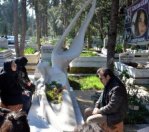Prison Sentence over ‘Major Sexual Assault’ For Özgecan’s Murderer

Click to read the article in Turkish
Ruling on the case of Özgecan Aslan's murderer that was reversed in part by the Supreme Court of Appeal, the lower court has insisted on its earlier decision of penalty increase for "major sexual assault" and increased the prison sentence from 15 to 22 years and 6 months.
The trial court passing a judgement on the case of Fatih Gökçe, one of the murderers of Özgecan Aslan, had sentenced Gökçe to aggravated life imprisonment for murder and to increased prison sentence for "major sexual assault.
The Supreme Court of Appeal affirmed the lower court's decision of aggravated life imprisonment for the crime of murder but revoked the decision of "penalty increase" for "major sexual assault".
Tarsus 1st Heavy Criminal Court deciding on the matter which was reversed in part by the supreme court, insisted on its prior ruling and sentenced Gökçe to 15 years in prison for "major sexual assault" and increased the prison sentence to 22 years and 6 months on the grounds that Aslan was not conscious at the time of the sexual assault.
What happened?
On February 11, 2015, in Mersin province, minibus driver Ahmet Suphi Altındöken (26) tried to rape passenger Özgecan Aslan in his minibus. Upon resistance of Aslan, Altındöken killed the woman with the help of his father Necmettin Altındöken (50), his friend Fatih Gökçe. (20).
He then burned the dead body of the deceased in an isolated area after cutting Aslan's hands off in order not to leave DNA sample.
The prosecutor Ayhan Akyol demanded aggravated life imprisonment for the three murder suspects for "monstrously torturing to death, attempting to qualified sexual assault and taking the right to life away by sexual intercourse".
On December 3, 2015, all three suspects were sentenced to aggravated life imprisonment for murder.
Ahmet Suphi Altındöken and his father Necmettin Altındöken were shot in the prison where Suphi Altındöken also lost his life.
The rape and murder of Özgecan Aslan found wide coverage in the media and sparked strong reactions among the feminist activists. It became one of the symbol cases of male violence which helped drawing attention to the issue of penalty abatement in femicide cases.
(ÇT/DG)







132.jpg)
132.jpg)

